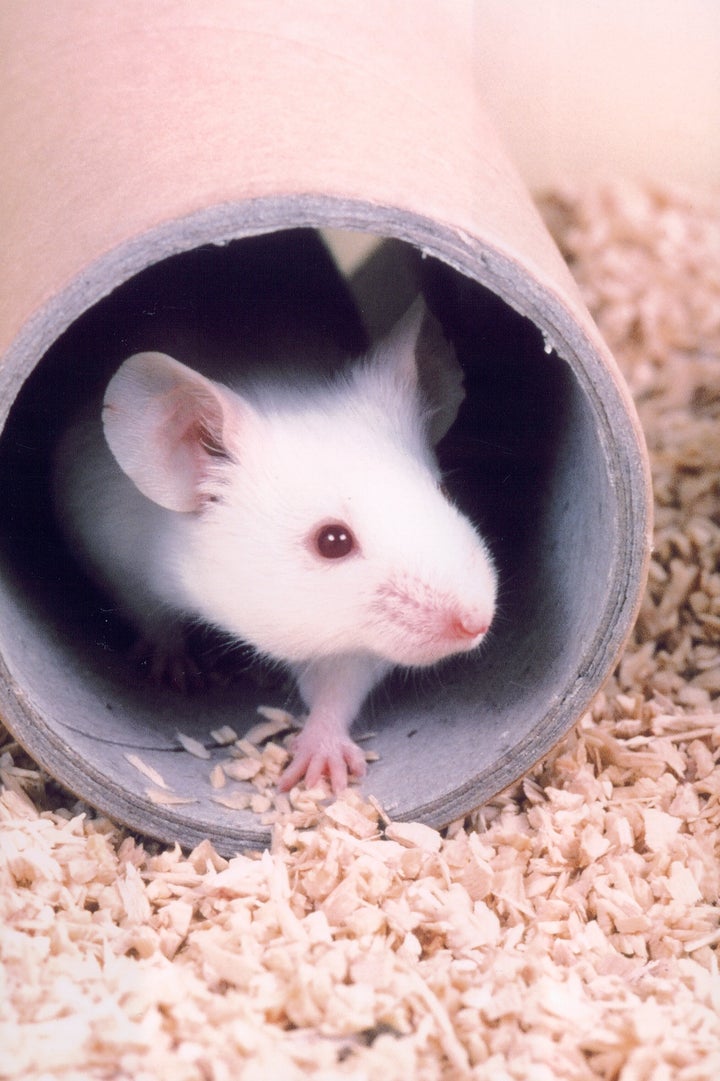This Wednesday, April 24, is the World Day for Animals in Laboratories, held annually to consider the use of animals in scientific and medical research. It is typically marked by small-scale protests, big money campaigns and, no doubt, articles such as Peter Tatchell's in the Huffington Post in which protest groups push their individual brands.
Although it is often claimed that it is "UN recognised", the day does not in fact appear anywhere on the UN list of observances. However, that does not mean that the welfare of animals in labs should not be taken seriously - on the contrary it should be considered every day.
One criticism of World Day for Laboratory Animals, is that protest groups tend to paint a very one-sided picture of animal research and are rather selective in their reporting. The picture below, for instance, originates from 1970s America, yet is still used today. Not representative, not this country, not even this century.

There are fewer pictures of the rodents and fish that today make up some 95% of the animals used in UK research. In fact around half of "experiments" are the birth of a laboratory mouse.

There is scant acknowledgement that it is illegal in the UK to use an animal if there is an alternative, or that research is done for the benefit of humans and animals alike, such as the badger TB vaccine, or that UK researchers are the most highly regulated in the world. Whilst we should never deny that suffering can occur, considering only cost does not help us determine value.
However, internationally, the welfare of animals should be of concern. Countries outside of the UK, and particularly outside of Europe, do not have nearly the same concern for animal welfare as is found in UK society and law. For instance, UK researchers do not use monkeys caught from the wild and it is illegal to use Great Apes. Some protesters ask why mice are used when they are only up to 90% genetically equivalent to humans; the answer to that conundrum in some other countries is to use a chimp.
A key criticism, then, is that potential suffering in labs should be something considered every day, everywhere, not just once a year. Internationally, animal protections that match the UK's high standards should be enshrined in law, and taken to heart by individual researchers. Domestically, the emphasis should be on individuals upholding the "3Rs" i.e. reducing the number of animals used, replacing them where possible and refining practices or experiments to minimise any potential suffering, held to account where necessary by those they are working with.
It is far more effective that those working in labs take this message to heart than it would be to generate thousands of hours of grainy and unremarkable CCTV footage, or hire an army of inspectors to jump out from behind the fume cupboard in the faint hope of catching somebody doing something illegal.
In the UK, the government-backed National Centre for the 3Rs (NC3Rs) leads the way in funding projects that promote replacement, refinement and reduction, with the 3Rs now also enshrined in law and embedded in the Home Office licensing system.
Some exciting replacement technologies are on the horizon, such as the recent news that a research team from Harvard was awarded the NC3Rs prize for animal replacement potential for a micro-device containing hollow channels lined with living human tissue cells. This 'lung-on-a-chip' can 'breathe' when a vacuum is applied to part of it, and was used to successfully model the development of pulmonary oedema, or water in the lungs. In addition this research was able to suggest several new avenues for drug development research.
Devices like this have been used to simulate the heart, kidney, arteries, bone, cartilage and skin. At present, organs-on-chips are still very basic and heavily reliant on data from living animals and people to validate their results. However, in the future, a whole network of organs-on-chips might be able to accurately model disease progression in the human body.
In other areas, it has been possible to replace mice with fruit flies to study Alzheimer's disease. In 2010, researchers from UCL published the results of a study in which they identified a potential drug target and successfully "treated" Alzheimer's in transgenic flies.
Hopefully, the government will retain and increase its funding for the 3Rs. There will be natural technological limits, such as limits to computing power, and one cannot virtually model what one does not yet understand. However, every effort should be made to achieve what can be achieved.
Nobody uses an animal if there is an alternative but, when they must be used, minimising their numbers and the avoidance of suffering must continue to be paramount in researchers' minds. Exciting new technologies are part of the solution, but nothing can replace constant vigilance in applying the 3Rs during the inception of experiments, the licensing of experiments and in the lab.
This means considering the potential for suffering every day, not just once a year.